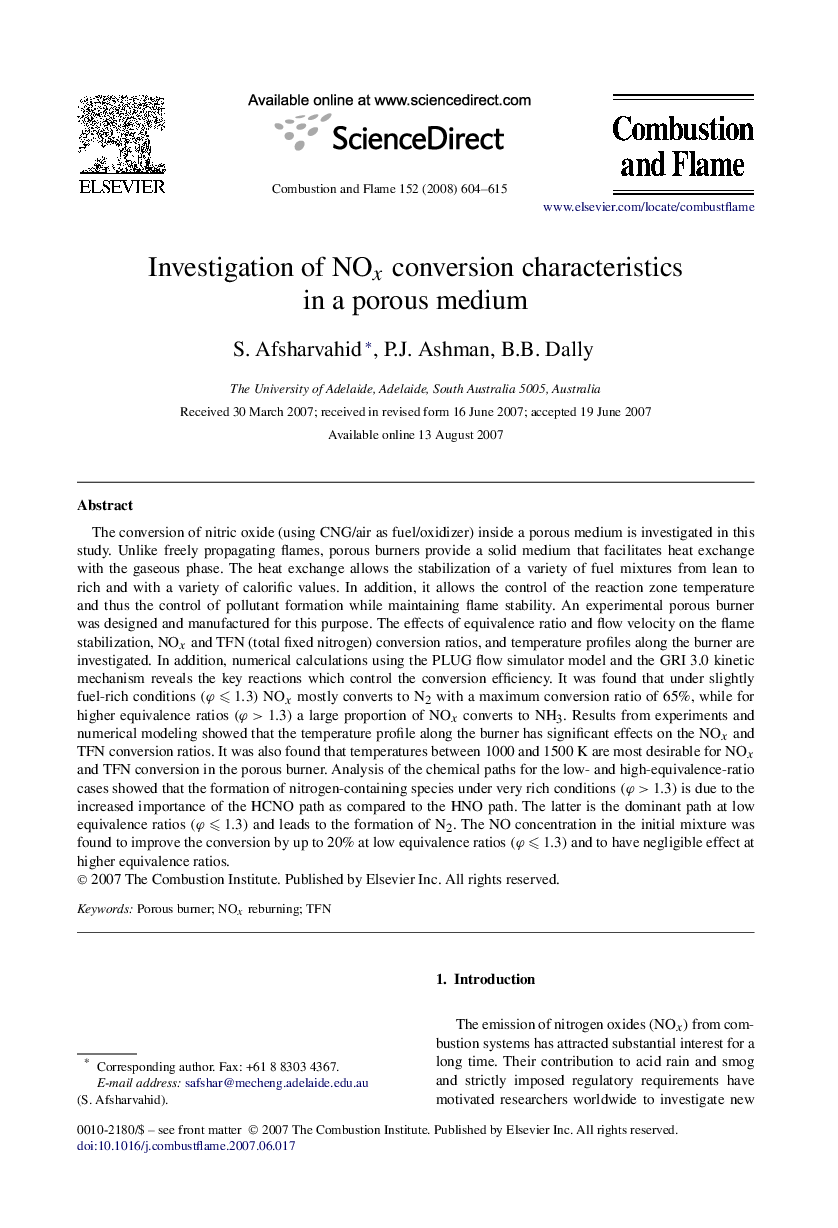| کد مقاله | کد نشریه | سال انتشار | مقاله انگلیسی | نسخه تمام متن |
|---|---|---|---|---|
| 168033 | 457902 | 2008 | 12 صفحه PDF | دانلود رایگان |

The conversion of nitric oxide (using CNG/air as fuel/oxidizer) inside a porous medium is investigated in this study. Unlike freely propagating flames, porous burners provide a solid medium that facilitates heat exchange with the gaseous phase. The heat exchange allows the stabilization of a variety of fuel mixtures from lean to rich and with a variety of calorific values. In addition, it allows the control of the reaction zone temperature and thus the control of pollutant formation while maintaining flame stability. An experimental porous burner was designed and manufactured for this purpose. The effects of equivalence ratio and flow velocity on the flame stabilization, NOx and TFN (total fixed nitrogen) conversion ratios, and temperature profiles along the burner are investigated. In addition, numerical calculations using the PLUG flow simulator model and the GRI 3.0 kinetic mechanism reveals the key reactions which control the conversion efficiency. It was found that under slightly fuel-rich conditions (φ⩽1.3)(φ⩽1.3) NOx mostly converts to N2 with a maximum conversion ratio of 65%, while for higher equivalence ratios (φ>1.3)(φ>1.3) a large proportion of NOx converts to NH3. Results from experiments and numerical modeling showed that the temperature profile along the burner has significant effects on the NOx and TFN conversion ratios. It was also found that temperatures between 1000 and 1500 K are most desirable for NOx and TFN conversion in the porous burner. Analysis of the chemical paths for the low- and high-equivalence-ratio cases showed that the formation of nitrogen-containing species under very rich conditions (φ>1.3)(φ>1.3) is due to the increased importance of the HCNO path as compared to the HNO path. The latter is the dominant path at low equivalence ratios (φ⩽1.3)(φ⩽1.3) and leads to the formation of N2. The NO concentration in the initial mixture was found to improve the conversion by up to 20% at low equivalence ratios (φ⩽1.3)(φ⩽1.3) and to have negligible effect at higher equivalence ratios.
Journal: Combustion and Flame - Volume 152, Issue 4, March 2008, Pages 604–615